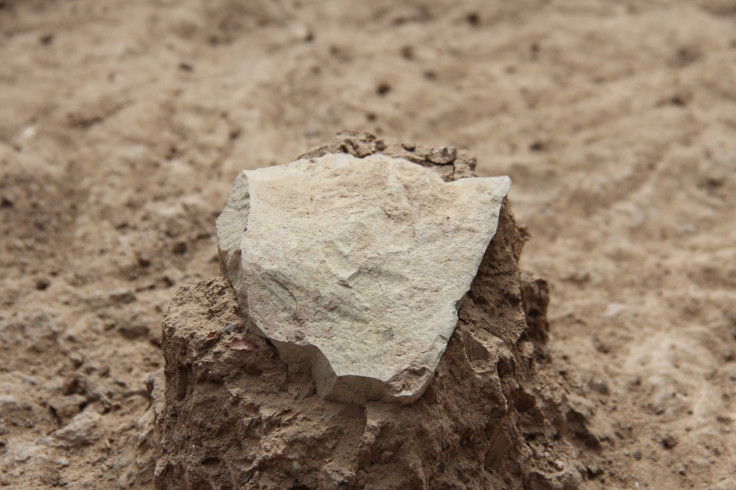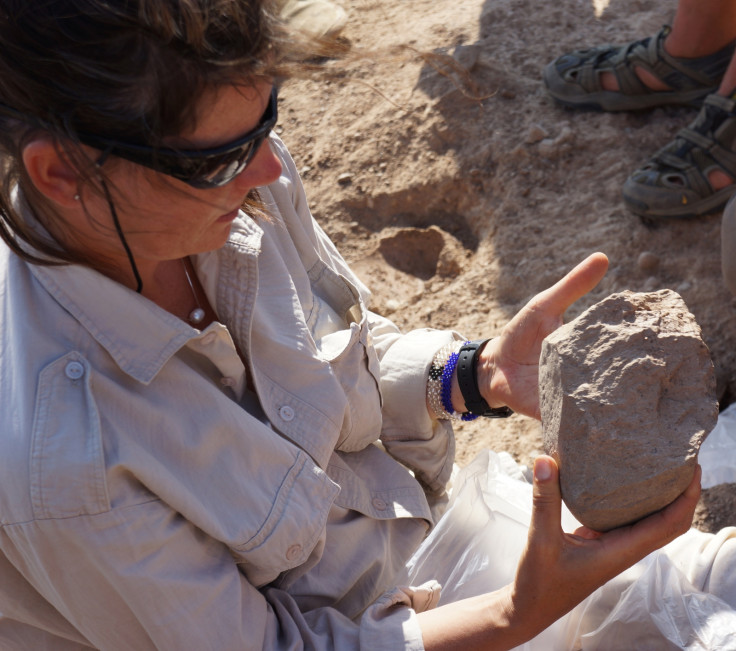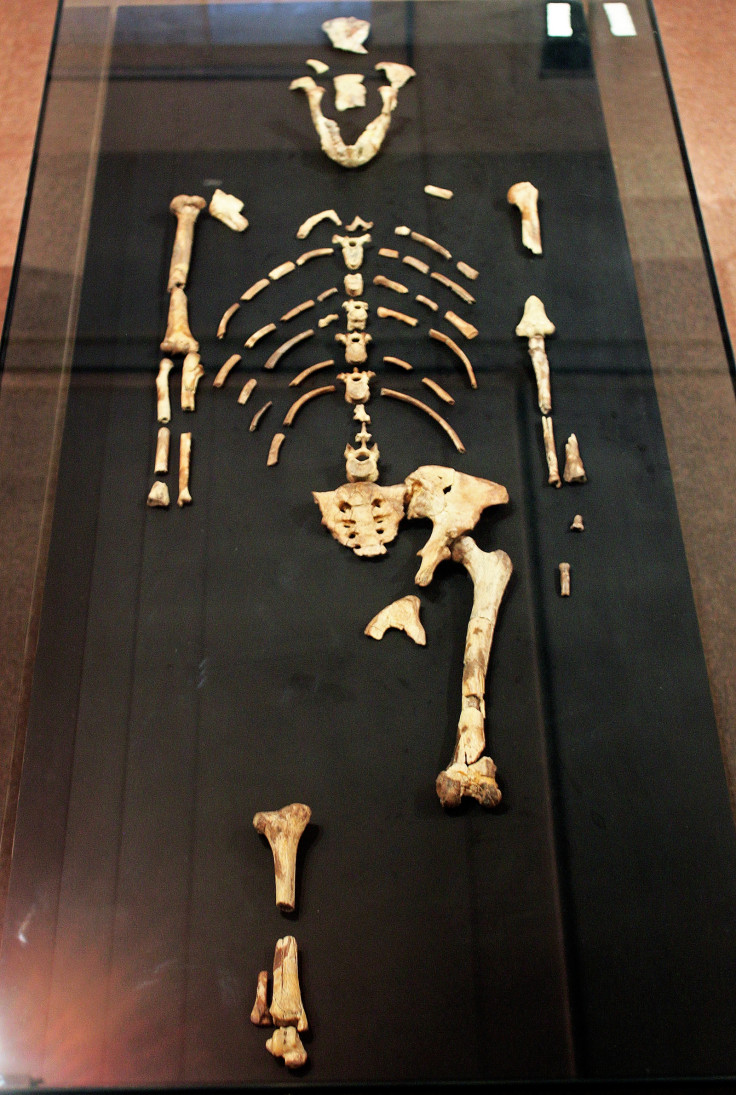Who were the mysterious species who used the world's oldest tools?

The world's oldest stone tools dating back 3.3 million years have been discovered by scientists working in north-western Kenya.
The tools pre-date the previous oldest stone tools by 700,000 years and challenge long-held ideas of which species first utilised them, while throwing up the possibility that it was an unknown human ancestor.
Study co-author Chris Lepre, from the Lamont-Doherty Earth Observatory and Rutgers University, dated the 150 artefacts discovered. He said: "It just rewrites the book on a lot of things that we thought were true."
Previously, the oldest known stone tools were made by the genus Homo and this development was linked to climate change and the appearance of savannah grasslands.
However, the stone tools found at the Lomekwi 3 site in Kenya contradicts this. The study, published in the journal Nature, also suggests the tools were used in a woodland setting, raising further questions about how and why they were made.
"Previously people thought stone toll use originated with the genus Homo," Lepre told IBTimes UK. "Homo had big brains, but there were several species within the genus Homo – and the question was which one of these is the biggest brained one? Which one is responsible for it? Now we have to figure out why stone tool use predates the genus homo and what caused it."
He said that in some ways, the find simplifies what we know about the development of stone tools – scientists had been trying to establish which of the Homo genus began using them as all species inherited the trait from previous ancestors.
On the other hand, though, it throws up a lot of questions about our earlier ancestors.

What were they used for?
The stone tools were much larger than the previous oldest – Oldowan stone tools – and would have been made by bashing one rock against another. "With the Oldowan, feasibly you could take one rock in one hand and the other rock in the other hand and use one like a hammer to shape the other," Lepre said. "With these you most likely have to place one on the ground and hold the other one with two hands then strike one against the one on the ground.
"They're bigger. With the Oldowan the theory is that the strikes are much more precise because you can be more selective about where you're striking around the rock. With this, it's a bit like throwing a ruby pass in from the sidelines. The guy has two hands and is throwing it – it's almost like a bash or bludgeon."
Scientists say the tools could have been used for a number of different purposes. It has been suggested they were used to cut meat of the bones of animal carcases, but the size and markings would suggest something different, especially as the species would have been living in a wooded environment at the time, with more access to plant resources.
Researchers also suggest they could have been used to open nuts or to bash open dead logs to get at the insects inside. Another theory is they were used to crack open bones to access the marrow but, as Lepre said, this is all within the realm of speculation.

Who made them?
The researchers have a number of candidates for which species made these tools. A 3.3 million-year-old skull of the hominin Kenyanthropus platyops was found a kilometre from the tools site.
It could also have been made by Australopithecus afarensis – the species the missing link Lucy belongs to – there is some evidence of primitive tools use from 3.39 million years ago. Cut marks found on animal bones in Dikika, Ethiopia, suggest the earliest consumption of meat among early hominins. No tools were found at the site but the only hominin fossil remains in the area were from Australopithecus afarensis.
Or, the authors add, they could have been made by an as-of-yet undiscovered early species of Homo.
Earlier in 2015, a partial lower jaw found in the Afar region of Ethiopia pushed back the fossil record of the genus Homo to 2.8 million years – 400,000 years earlier than previously thought. This study, published in the journal Science, suggested Homo had already evolved into several distinct lines by two million years ago.
Researchers tried to better understand how the tools might have been made by hitting them together themselves. Findings suggest the arm and hand movements needed for these actions were probably more similar to those used by chimpanzees than by those employed by the Oldowan cultures.

"[The technique] could represent a technological stage between a hypothetical pounding-oriented stone tool use by an earlier hominin and the flaking-oriented knapping behaviour of [later] toolmakers," they conclude. Whereas chimps would hit a stone to open nuts, using stones for multiple purposes, or to use another to make it sharper, is more advanced behaviour.
Why we do not know the identity of these toolmakers could be the result of a number of reasons, Lepre admitted. He said: "I guess it depends on what is the best thing for survival. Kind of like how adaptation and evolution work. Stone tool use – whichever human ancestor evolved it –didn't help it persist too much. Maybe one reason was that big brains were around at the time.
"Another reason could be that around 3.3 million years ago, the first human ancestors weren't as good at walking upright as later human ancestors. Perhaps walking upright could have been the definitive adaptation that gave the advantage, rather than stone toolmaking."
What next?
Richard Potts, director of the Human Origins Program at the Smithsonian's National Museum of Natural History, who was not involved in the study, said: "The capabilities of our ancestors and the environmental forces leading to early stone technology are a great scientific mystery. [These tools] begin to lift the veil on that mystery, at an earlier time than expected."
Lepre said they may find even older tools, but that eventually the archaeological record "has to reduce to nothing". He said: "Whether we've hit that, whether we've gotten to the dawn of stone took making, it's really unclear at this point," adding there could be far older tools that were made from perishable goods such as sticks but we will never know about them because they do not preserve.
As a geologist, Lepre plans to return to the site to get a better understanding of the vegetation and landscape from the time. Another team will be analysing the artefacts found to find out exactly how they were made. Finally, another group plans to look for similar sites from the same time period and area, possibly leading to the identity of these early toolmakers.
"I realised when you figure out these things, you don't solve anything, you just open up new questions," Lepre said. "I get excited, then realise there's a lot more work to do."
© Copyright IBTimes 2025. All rights reserved.






















